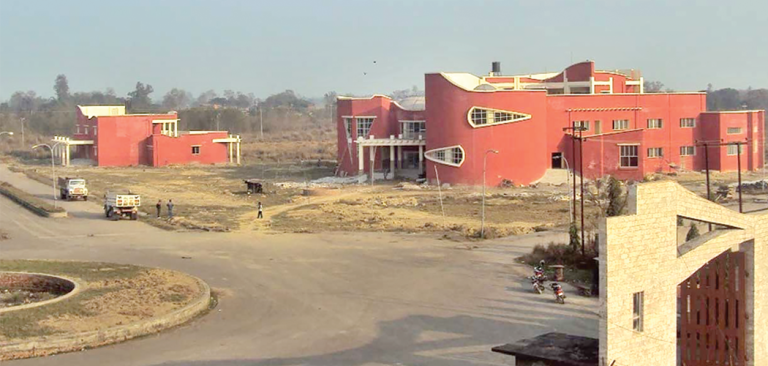
Industrialists have signed an agreement to set up industries on all the plots in the Special Economic Zone (SEZ) in Bhairahawa.
Bhairahawa SEZ, the country’s first export-oriented project, is spread over an area of 52 bighas of land.
Although there are 68 plots ranging from 1,400 to 3,700 square metres, only seven industries are currently in operation.
The SEZ Authority on February 27 had issued a notice to businessmen asking them to submit proposals to set up and operate industries in the vacant plots.
That resulted in applications for 55 plots, more than the demand.
After 10 years of its construction, the area is going to be used on a full scale. The industry should be established and come into operation within one-and-a-half years of the agreement.
New industrialists were added to the remaining plots after the last notice. They have also signed an agreement to operate the industry. The initial basic development for the industries to be established in this area is constructed by the government itself.
Chandika Prasad Bhatt, executive director of the SEZ Authority, said that only 26 industries came during the two periods of advertising.
“Now, all the plots of Bhairahawa SEZ are filled. Currently seven industries are providing employment to 400 people with an investment of Rs. 3 billion. Now the coming industries will invest Rs. 9 billion,” Bhatta said.
The spice and marble industry, which signed the agreement last time, has promised to invest Rs. 900 million for three plots.
Once all industries come into operation, a least 3,500 people are expected to get employment.
The industries have to export at least 60 per cent of their production abroad. Based on the nature of the industry, some industries have entered into an agreement to export abroad within one to two years. So far seven industries have exported products worth Rs.500 million.
It is estimated that the industries now will export goods worth Rs. 12 billion.
General Manager of Panchakanya Group Devendra Sahu complained that the problems of electricity, water and drainage have started surfacing again in industries there.
He said, “We have to manage electricity and dig deeper for water. When there is no electricity, we have to run costly generators, resulting in the increased cost of production.”
Source : TRN,






